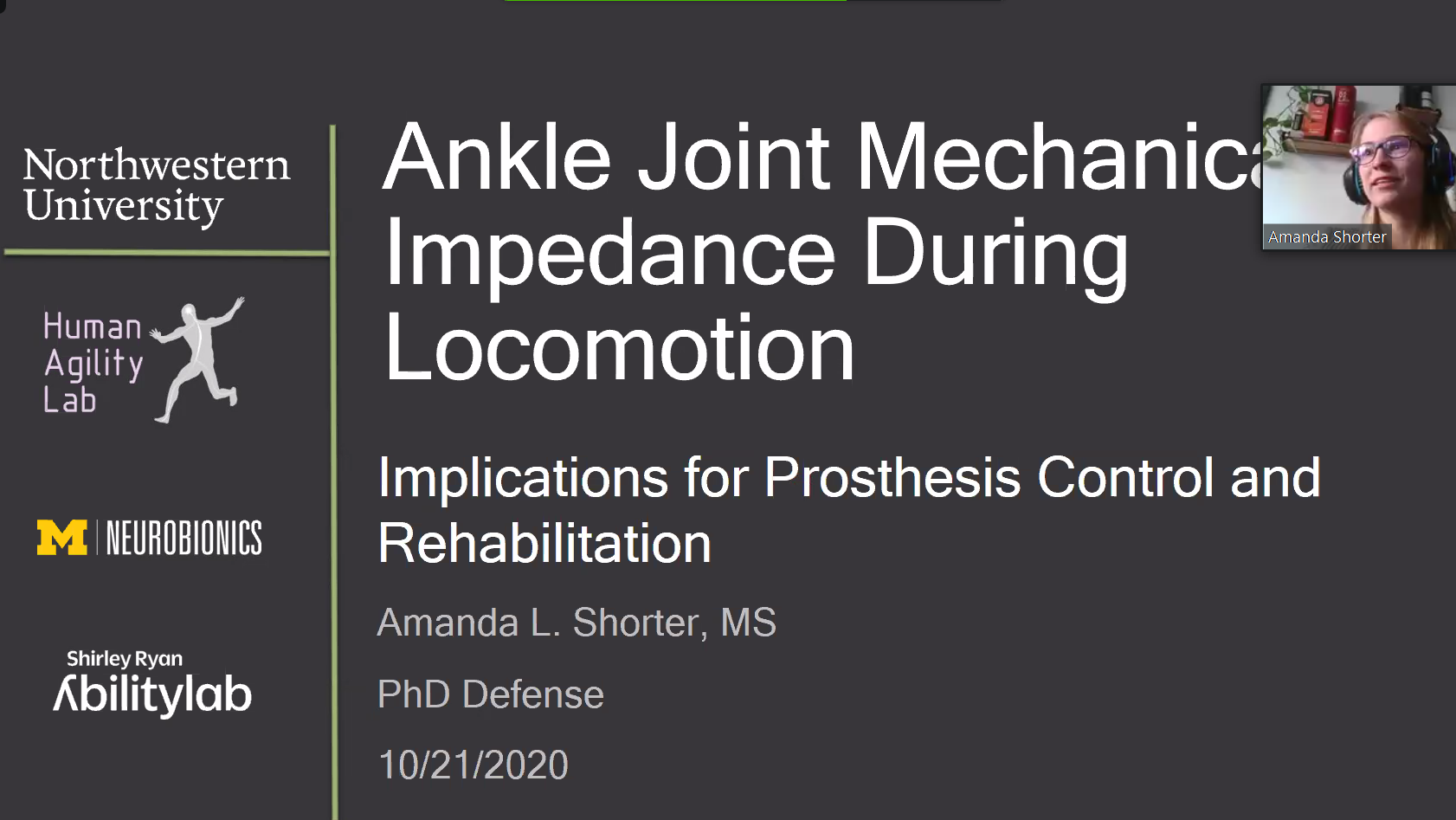Body
Congratulations to Amanda Shorter on the successful defense of her PhD dissertation. Amanda conducted some of her research within the Regenstein Foundation Center for Bionic Medicine (CBM), and was also a member of the Human Agility Lab at the Northwestern University Department of Physical Therapy and the Neurobionics Lab at the University of Michigan. For her work within CBM, she was co-advised by Drs. Levi Hargrove, PhD and Arun Jayaraman, PT, PhD.
On Wednesday, October 21, 2020, she successfully defended (via Zoom) her doctoral thesis, Ankle Joint Mechanical Impedance During Locomotion - Implications for Prosthesis Control and Rehabilitation. With this capstone, Amanda will earn her PhD in Biomedical Engineering from Northwestern University. Well done on all of your efforts and accomplishments, Amanda!

Doctoral Abstract
Body
The dynamics of human joints are fundamental characteristics to the human motor system, and altered joint impedance can hinder mobility. Individuals with transtibial amputation typically experience slower and energetically costly gait, while individuals with chronic stroke experience persisting gait deficits arising from spasticity, hypertonia and paresis. Investigating joint impedance in impaired and non-impaired populations could lead to innovations in assistive technology and therapeutic interventions. Unfortunately our current understanding of impedance during walking is limited, preventing its clinical application. My research fills this gap and expands our knowledge of human gait biomechanics. Using a mechatronic platform I apply perturbations to the ankle at discrete time points during locomotion. Impedance is estimated at these points using least-squares system identification on a second order parametric model consisting of stiffness, damping, and inertia. First, I characterize ankle impedance during terminal stance phase of walking. Stiffness decreases throughout terminal stance as energy is released; damping increases in preparation for toe-off. This work provides insight into how ankle impedance is regulated when substantial mechanical energy is added and could inform future prosthesis control. I then estimated ankle impedance throughout the stance phase of running and compared results to walking. Stiffness estimates during running differ in both magnitude and temporal variation, which should be considered in the control of more versatile wearable robotics. Finally, ankle impedance was estimated for both the paretic and non-paretic ankle of chronic stroke survivors during walking. The relationship between ankle impedance impairment and clinical measures of mobility and impairment is examined. Stiffness of the paretic ankle lower during mid-stance as compared to the non-paretic ankle, a change independent of muscle activity. Inter-limb differences in ankle stiffness, but not ankle damping or passive clinical assessments, strongly predicts walking speed and distance. This work elucidates how stroke alters ankle impedance during walking, and how clinical assessments may not indicate true representations of ankle stiffness and damping characteristics. This dissertation offers a more complete understanding of how sagittal plane ankle impedance is regulated during walking, may provide a foundation for assessment of neuromotor pathologies, and could enable the design and control of biomimetic assistive technologies.
